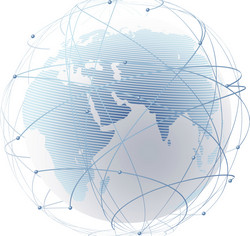The dawn of a new era in geospatial information
The Geospatial Web, or GeoWeb, merges geographical information with the abstract information of the internet. It has become increasingly popular with the rise of global positioning system devices, geolocation services and smartphones. By becoming increasingly more interactive, GeoWeb has now entered the era of the GeoWeb 2.0. The EU-funded GEOCROWD(opens in new window) (A geospatial knowledge world) project set out to promote the GeoWeb 2.0's vision. Focus was on the collection, storage, analysis, processing, reconciliation and accessibility of semantically rich, user-generated geospatial information available on the internet. Project partners carried out three main activities: exploiting user-contributed geospatial data, managing geospatial data, and accessing and disseminating this data online. With respect to user-generated data, the team focused on travel blogs, where it investigated the semantic information non-expert users utilise in their descriptions. A framework was established for matching and mapping different geospatial data streams. To generate better mappings, tools were developed enabling user involvement. For GeoWeb data management, emphasis was placed on distributed data management systems such as cloud computing. Researchers studied the interface between mobile phones and cloud computing. Findings showed that alternative data processing methods can handle very high service request loads while maintaining performance and supporting complex queries. The project also examined crowdsourcing of geospatial data, with research focusing on data obtained from travel blogs. It developed methods for crowdsourced routing and a routing algorithm that uses crowdsourced data from mobile devices and the web. A final research theme focused on accessing geospatial content. Studies led to the development of several innovations. These include a method for automatic road-network generation and map-attribute generation based on vehicle tracking data, a data management infrastructure that captures indoor distance, and a web service based on everyday smartphone technology that allows rapid, barrier-free acquisition and contribution of complete geometric information about small spatial entities. GEOCROWD contributed to helping make the GeoWeb 2.0 vision a reality.







